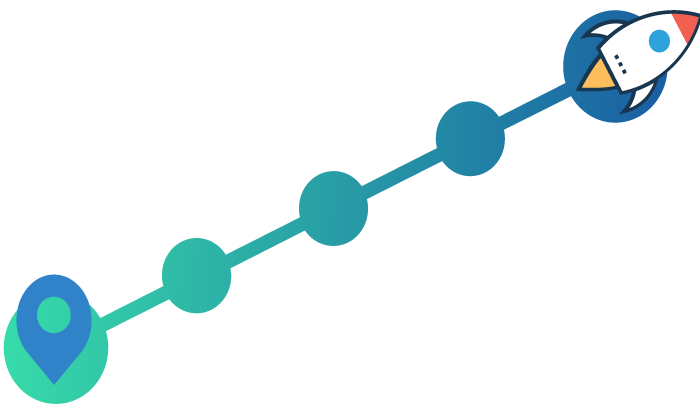Staying competitive in today’s digital marketplace requires more than just a strong online presence.
Customers have come to expect experiences that feel as though they’ve been tailored just for them—regardless of the platform they’re using or the stage of their journey. This is where a robust Customer Relationship Management (CRM) system can make all the difference.
In 2025, the best CRMs are doing far more than storing customer data; they’re powering every stage of a business’s online presence, from personalisation to seamless integrations and beyond.
Below, we’ll explore key trends shaping CRM evolution this year, focusing on how a flexible content management system (CMS) can team up with your CRM to give you a genuine competitive edge.
1. Data-Driven Customer Experiences
One of the most significant shifts we’re seeing in CRM is the move toward data-driven experiences, where the interactions customers have with your website, social channels, and even offline touchpoints are analysed in real time. Instead of bombarding all visitors with the same content, businesses are using CRM data to tailor messages, offers, and follow-up workflows. This leads to deeper engagement and higher conversion rates—because, ultimately, personalisation shows your customers you understand them.
For instance, imagine a financial services website built on Umbraco. When visitors start filling out a mortgage application form but abandon it halfway, Microsoft Dynamics can automatically flag this. It might then send out a personalised text or email encouraging them to resume the process and offering a more straightforward step-by-step guide. By acting on the data collected—like how far users got into the form or which pages they spent the most time on—you can dramatically reduce dropout rates and reclaim potential lost leads.
Similarly, in a B2B manufacturing scenario, each time someone requests a quote, Dynamics immediately updates or creates a lead record. This removes the need for manual, error-prone data entry and ensures your sales team can quickly follow up with prospects. By consolidating data from various channels—website forms, emails, phone calls—you end up with a 360-degree view of each potential customer. This holistic view drives smarter decisions on everything from marketing campaigns to product development.

2. AI-Powered Chatbots Enhancing the Customer Journey
Chatbots used to be simple pop-up widgets that answered basic questions. In 2025, they’ve evolved into AI-driven assistants capable of delivering real-time support and personalised recommendations. This is made possible by deep integration with CRM data: if a chatbot can “see” your customer’s past interactions, open orders, and support tickets, it can respond in a way that feels remarkably human.
Picture an e-commerce site where customers often ask for order updates. When the chatbot on the site is linked to the CRM, it can instantly retrieve the latest shipping details. If the customer shows interest in additional products, the chatbot might recommend items based on past purchases. This not only saves time for customer service teams but also helps the customer feel valued with every interaction—while potentially boosting upsells along the way.
3. Tech Infrastructure & Responsibility
As user expectations grow, so does the need for a flexible and secure technical backbone. More and more companies are embracing advanced CMS structures, tightening data security measures, and even tracking their sustainability footprint—all in one holistic ecosystem.
Headless CMS for Flexible Content Delivery
A headless CMS is essentially a content management system that separates (“decouples”) the front-end user interface (how your site or app looks) from the back-end content repository (where everything is stored). This means you can manage your content in one place and push it out to multiple platforms—like your website, mobile app, or even in-store displays—without constantly reformatting or rebuilding.
If you’re running Umbraco in a headless mode, you’re free to experiment with new front-end designs or integrate cutting-edge features without worrying about breaking the content structure. Meanwhile, Microsoft Dynamics keeps a watchful eye on user interactions across these various channels, ensuring that all customer data—like sign-ups, lead inquiries, or purchase history—flows seamlessly back into your CRM.
A non-profit organisation, for example, might rely on a headless Umbraco setup for its main website, mobile app, and even public kiosks at events. Members could renew subscriptions, sign up for newsletters, or donate via any channel, and Dynamics would unify all these touchpoints into a single, easy-to-navigate record. This not only enhances user experience but also provides staff with real-time insights into member behaviour—no matter how or where those members choose to engage.

Enhanced Security for Website and CRM Data
Any conversation about modern CRM solutions must address data security. With cyber threats on the rise, businesses need solutions that handle personal and financial data with the utmost care.
Umbraco and Microsoft Dynamics use secure APIs and encryption to protect sensitive information, whether it’s a customer’s payment details or a patient’s health records. And because these platforms prioritise compliance with regulations like GDPR, you can rest assured that your brand is respecting user privacy and meeting global security standards. For a high-transaction e-commerce store, this level of security fosters consumer trust and helps protect your reputation.
Sustainability Tracking for Corporate Responsibility
Finally, sustainability is playing a growing role in how companies connect with customers. Many CRMs, now allow you to log sustainability metrics—such as the carbon footprint of shipping methods or the impact of certain products. Then, your website can highlight eco-friendly or “green choice” items and feed real-time purchase data straight back into Dynamics.
For retailers, this offers a tangible way to show their commitment to the planet. Over time, you can generate monthly or quarterly reports to measure the adoption of greener shipping and product choices—valuable data not just for internal decision-making, but also for marketing and corporate social responsibility efforts.

Bringing It All Together
When you combine a user-friendly CMS like Umbraco with a powerhouse CRM like Microsoft Dynamics, you get the best of both worlds:
- Personalised Customer Journeys: Tailor every interaction to the individual, whether it’s a follow-up email on an abandoned mortgage application or a chatbot that recognises returning customers and their past orders.
- Omnichannel Coordination: Capture data from websites, mobile apps, social media, and even offline interactions, all in one centralised location.
- Real-Time Insights: Use advanced analytics to refine website layouts, e-commerce funnels, and marketing campaigns on the fly.
- Robust Security: Protect customer data with secure APIs, encryption, and adherence to global privacy standards.
- Sustainability Integration: Track eco-friendly initiatives and highlight them to your audience, cementing your brand’s commitment to social responsibility.
Conclusion: Preparing for a Digital-First Future
In 2025, customer expectations are higher than ever. People want to feel understood, respected, and supported at every step. At Element78 we combine our strategic thinking to leveraging Umbraco’s flexible content management capabilities to provide best in class digital experiences—no matter how, when, or where your audience chooses to interact with you.
We understand the power of data-driven personalisation, AI-powered interactions, a flexible headless CMS approach, and rigorous security, to ensure you are equipped for success 2025’s digital-first environment—and beyond. The future is here; make sure your CRM is ready for it.
If you are looking to discuss your businesses digital transformation and the future of your website then please drop us a line we are ready to help.


